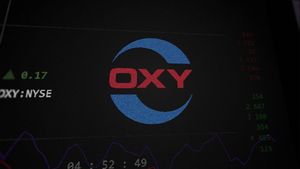Both funds aim to generate monthly income by selling call options on CRCL and spot ether ETPs, respectively, while maintaining long exposure to the underlying assets.
Bitwise Asset Management, a global crypto asset manager with more than $15 billion in client assets, today announced the launch of two new option income funds: the Bitwise CRCL Option Income Strategy ETF (ICRC) and the Bitwise Ethereum Option Income Strategy ETF (IETH). ICRC is the first-ever covered call ETF that offers investors exposure to stablecoin creator Circle, whose initial public offering in June was one of the most successful public listings for a crypto firm in history.1 IETH similarly combines an expertly managed options income strategy with underlying exposure to ether, the native token of the blockchain behind two fast-growing segments of crypto: stablecoins and tokenization.2
The launch expands Bitwise’s suite of income-focused ETFs, which also includes covered call strategies centered on Strategy (IMST), MARA Holdings (IMRA), Coinbase (ICOI), and GameStop (IGME).
“ICRC and IETH take complex derivatives instruments and, through sound strategy construction, harness them as accessible investment tools,” said Gordon Grant, Portfolio Manager and Head of Derivatives at Bitwise. “ICRC trades options on CRCL both to generate potential income and to provide ongoing exposure to a leading stablecoin provider, while IETH's exposure to ether seeks to exploit the premium from ether’s at-times elevated volatility, while also participating in core thematic trends such as institutional adoption of ETH, tokenization demand, and network effects from stablecoins. Together, they offer disciplined ways for investors to engage with crypto’s growth.”
By seeking to harness volatility to generate income, ICRC and IETH offer fresh ways for investors to tap into crypto’s biggest stories. ICRC provides exposure to one of the most influential companies behind stablecoins, a $284 billion market that has grown more than 90% over the past three years.3 IETH, meanwhile, seeks to offer income-generating exposure to both stablecoins and tokenized assets, a $31 billion market that has grown 1,600% since 2022.4
“The expansion of the option income suite is a game-changer for everyday investors,” said Hunter Horsley, CEO of Bitwise. “Crypto is famous for its volatility, and these ETFs turn that into an opportunity to earn income for investors. Launching ICRC, the first-of-its-kind CRCL covered call strategy, and IETH, an innovative ether option income strategy, is a step forward for Bitwise, and we’re thrilled about the value they bring to our growing community of investors.”
The ETFs aim to make income distributions monthly, with the first distribution to be announced on November 26. Distributions may include return of capital, which will have different tax treatment and may reduce an investor's cost basis. The expense ratio is 0.97% for IETH and 0.98% for ICRC.
About Bitwise
Bitwise Asset Management is a global crypto asset manager with more than $15 billion in client assets and a suite of over 30 crypto investment products spanning ETFs, separately managed accounts, private funds, hedge fund strategies, and staking. The firm has an eight-year track record and today serves more than 4,000 private wealth teams, RIAs, family offices, and institutional investors, as well as 15 banks and broker-dealers. The Bitwise team of over 100 technology and investment professionals is backed by leading institutional investors and has offices in San Francisco, New York, and London. For more information on Bitwise, visit www.bitwiseinvestments.com.
RISKS AND IMPORTANT INFORMATION
Carefully consider the investment objectives, risk factors, charges, and expenses of the Bitwise CRCL Option Income Strategy ETF (ICRC) and the Bitwise Ethereum Option Income Strategy ETF (IETH) (each a “Fund” and together the “Funds”) before investing. Please read the prospectus carefully before investing. To obtain a current prospectus visit: for ICRC, icrcetf.com/prospectus; for IETH, iethetf.com/prospectus.
An investment in a Fund is not the same as an investment in the underlying asset. The Funds do not invest directly in shares of CRCL or Ether ETPs. Fund shareholders are not entitled to any dividends from the underlying security. Each Fund’s strategy is subject to all potential losses if the underlying asset decreases in value, which may not be offset by income received by the Fund.
Market Risk. Market risk is the risk that a particular security, or Fund Shares in general, may fall in value. Securities are subject to market fluctuations caused by such factors as economic, political, regulatory or market developments, changes in interest rates and perceived trends in securities prices.
Covered Call Strategy Risk. A covered call strategy involves writing (selling) covered call options in return for the receipt of premiums. The seller of the option gives up the opportunity to benefit from price increases in the underlying instrument above the exercise price of the options but continues to bear the risk of underlying instrument price declines. The premiums received from the options may not be sufficient to offset any losses sustained from underlying instrument price declines over time.
The covered call strategy utilized by the Funds is “synthetic” because the Funds’ exposure to the price return of the underlying asset is derived through options exposure, rather than direct holdings of the underlying asset. Because such exposure is synthetic, it is possible that the Funds’ participation in the price return of the underlying asset may not be as precise as if the Fund were directly holding the underlying asset.
Issuer-Specific Risks. Issuer-specific attributes may cause an investment held by a Fund to be more volatile than the market generally. The value of an individual security or particular type of security may be more volatile than the market as a whole and may perform differently from the value of the market as a whole.
Equity Securities Risk. Equity securities are subject to changes in value, and their values may be more volatile than those of other asset classes.
Digital Assets Risk. CRCL and Ether ETPs may have substantial holdings of bitcoin, ether, and other digital assets. Accordingly, they are subject to the risks associated with such holdings. Bitcoin and ether are relatively new innovations and the market for bitcoin and ether is subject to rapid price swings, changes and uncertainty. Bitcoin and ether are subject to the risk of fraud, theft, manipulation or security failures, operational or other problems that impact the digital asset trading venues on which bitcoin trades. The realization of any of these risks could result in a decline in the acceptance of bitcoin or ether and consequently a reduction in the value of bitcoin, ether, and shares of CRCL or Ether ETPs.
Custody Risk. Security breaches, computer malware and computer hacking attacks have been a prevalent concern in relation to digital assets. The crypto assets held by CRCL and Ether ETPs will likely be an appealing target to hackers or malware distributors seeking to destroy, damage or steal such crypto assets. To the extent that CRCL or Ether ETPs are unable to identify and mitigate or stop new security threats or otherwise adapt to technological changes in the digital asset industry, such crypto assets may be subject to theft, loss, destruction or other attack.
Digital Asset Regulatory Risk. There is a lack of consensus regarding the regulation of digital assets, including bitcoin, and their markets. Ongoing and future regulatory actions with respect to digital assets may alter, perhaps to a materially adverse extent, the nature of an investment in the shares of CRCL or Ether ETPs, or the ability of CRCL or Ether ETPs to continue to operate.
Concentration Risk. The Funds are susceptible to an increased risk of loss, including losses due to adverse events that affect the Funds’ investments more than the market as a whole, to the extent that the Funds’ investments are concentrated in investments that provide exposure to CRCL, Ether ETPs, and the industry to which they are assigned.
Derivatives Risk. The use of derivative instruments involves risks different from, or possibly greater than, the risks associated with investing directly in securities and other traditional investments. Derivative prices are highly volatile and may fluctuate substantially during a short period of time. Trading derivative instruments involves risks different from, or possibly greater than, the risks associated with investing directly in securities. The use of leverage may cause a Fund to liquidate portfolio positions when it would not be advantageous to do so in order to satisfy its obligations or to meet regulatory or contractual requirements for derivatives. The use of derivatives can magnify potential for gain or loss and, therefore, amplify the effects of market volatility on share price.
New Fund Risk. The Funds are recently organized investment companies with a limited operating history. As a result, prospective investors have a limited track record or history on which to base their investment decision.
Options Risk. The use of options involves investment strategies and risks different from those associated with ordinary portfolio securities transactions and depends on the ability of the Funds’ portfolio managers to forecast market movements correctly. The prices of options are volatile and are influenced by, among other things, actual and anticipated changes in the value of the underlying instrument, or in interest or currency exchange rates, including the anticipated volatility, which in turn are affected by fiscal and monetary policies and by national and international political and economic events.
Nondiversification Risk. The Funds are nondiversified and may hold a smaller number of portfolio securities than many other products. To the extent the Funds invest in a relatively small number of issuers, a decline in the market value of a particular security held by a Fund may affect its value more than if it invested in a larger number of issuers.
ICRC and IETH are distributed by Foreside Fund Services, LLC, which is not affiliated with Bitwise or any of its affiliates.
1 At its IPO, Circle raised more than $1 billion at an initial valuation of $18 billion.
2Tokenization refers to the process of converting traditional assets like equities or real estate to digital tokens that trade on blockchains.
3Source: The Block. As of September 30, 2025.
4Source: RWA.xyz. As of September 30, 2025.
View source version on businesswire.com: https://www.businesswire.com/news/home/20251002478049/en/
Contacts
Media Contact
Frank Taylor/Stephanie Dressler
Dukas Linden Public Relations
Bitwise@DLPR.com





